Chinese embroidery is the other thing that really stands out from Chinese culture and societal practices. The embroidery is elaborate, stunning, and it demonstrates the real Chinese spirit. But what exactly is Chinese embroidery, and what’s the significance of the embroidery? And what’s the history behind Chinese embroidery?
Chinese embroidery, also known as silk embroidery, is an art that dates all the way back to the Neolithic age and is quite widespread across China during the reign of the Han dynasty between 206BC and 220AD. It can be defined as one of the ancient forms of needlework that was prevalent in China. It features some of the most intricate designs that are embroidered or sewn into garments, tapestries, and other types of tapestries. In the oldest embroidery techniques and options, embroidery involved the sewing of the silk thread onto the silk fabric. And these fabrications and embroidered pieces were only crafted for individuals belonging to the upper classes. It wasn’t until many years later that embroidery was accessible to the masses – this was made possible by the fact that Chinese embroidery became a common skill for pretty much all Chinese women.
Over time, the embroidery styles evolved from simple chain stitches made from silk with a few extra spaces between the stitches to denser forms of embroidery between the stitches. The new embroidery designs also feature more colorful designs and unique stitching styles. These changes were also influenced by the changes in the ruling dynasties that all demanded and curated more advanced designs that evolved from the simpler designs of the past. And as expected, these changes led to different types of embroidery.
Today, there are 4 main styles and schools of Chinese embroidery that have emerged from the Chinese cultures over the years, but all these embroidery schools reached their peak after the establishment of the Silk Road, which created and increased the demand for Chinese goods.
There 4 main schools of Chinese embroidery have since been designated as part of the Chinese Intangible Cultura Heritage by the government. These schools include the Shu Embroidery, Su embroidery, Xiang embroidery, and the Yue embroidery school. While there often are mentions of the Miao Embroidery style, this is more of a minority group embroidery style that is separate from the 4 main groups listed above.
What Is Chinese Embroidery Called?
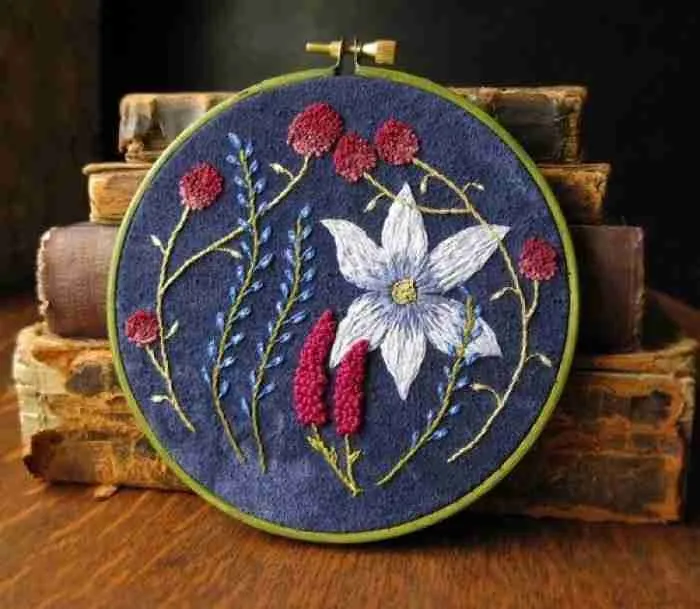
While Chinese embroidery represented one of the oldest forms of needlework known to man and was also known as silk embroidery thanks to the use of silk for the thread, there is no one name that encompasses all the types of Chinese embroidery styles.
In this section, we’ll therefore take you through the different types of schools of Chinese embroidery to ensure that you have a better understanding of the subject and the richness of Chinese cultural elements.
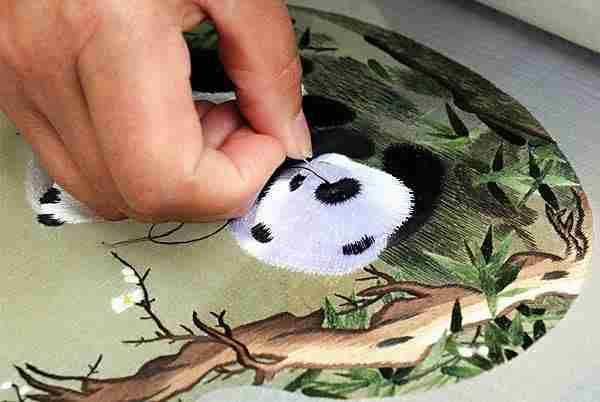
Shu Chinese Embroidery School – this embroidery style is associated with Chengdu city, and because of the Shu and Chuan abbreviations for the Sichuan, Shu embroidery is also known as Chuan embroidery. It features tight stitches, mixed threads, and incorporation of the panda or nature, and it’s often used on soft fabrics with brightly colored thread used.
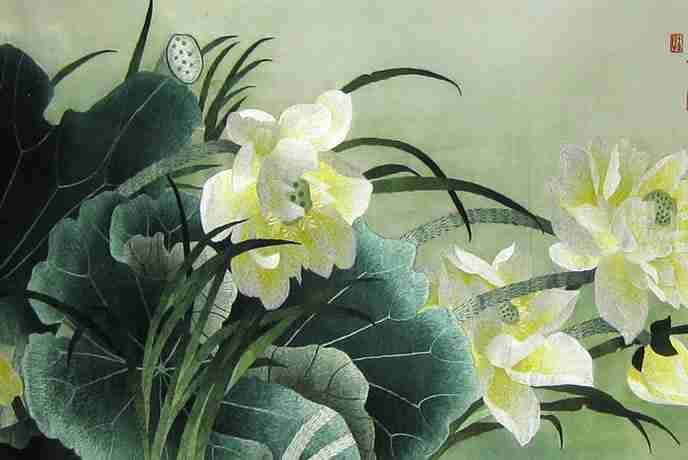
Xiang Chinese embroidery – the Xiang embroidery style is from Hunan province, and it largely mimics art forms like calligraphy, engraving, and painting, with imagery that is reversible on both sides and ideally done on satin. It also features the use of broad-brush motifs of nature and only emphasizes a few colors and solid surfaces. It was the most prized embroidery style for the Qing Dynasty.
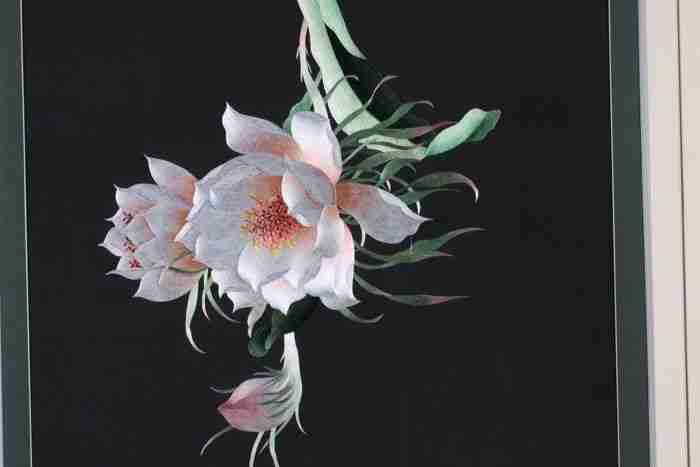
Su Embroidery – this style of embroidery dates back to Pre/ Post Ming dynasty periods and was common in the province of Jiangsu. The embroidery features art with Western and Japanese influences. And it’s known for its high degree of refinement with delicate lines, clear demarcations, and elegant and tasteful designs overall. The colors used are mostly monochromatic, but there is a mix of colors. The artwork or embroidery is reversible, and this embroidery style gives the style the title of master embroidery. The style was common in the Qing Dynasty’s court.
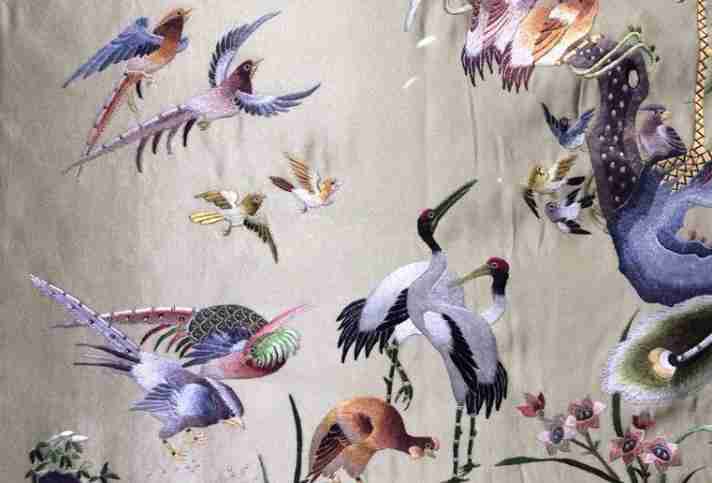
Yue Embroidery – also called Cantonese embroidery, the Yue embroidery style is associated with the Guangdong Province, and the style is considered the oldest style of embroidery. It featured the use of twisted peacock feathers and horsetail hair for the separation of the color borders. Notably, this embroidery style doesn’t have too much depth; it’s commonly done on cotton and not silk and features motifs of mythical creatures like the phoenix and dragons.
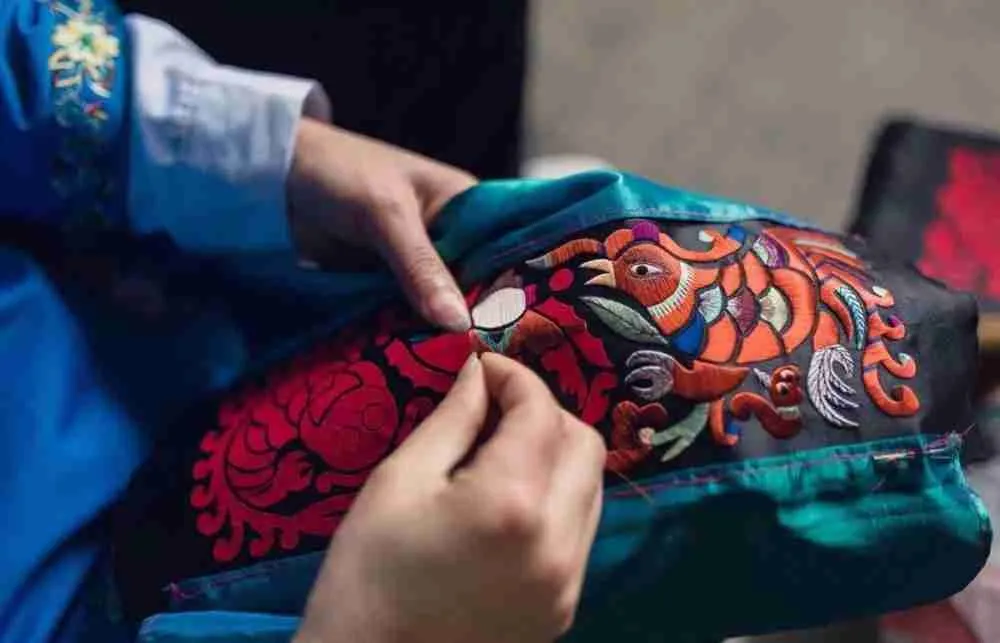
Miao Embroidery – this is an embroidery style from the minorities, and it features the embroidery of propitious animals, with bold and profuse colors from scarlet and purple to dark blue and even bottle green.
Chinese Embroidery Meaning
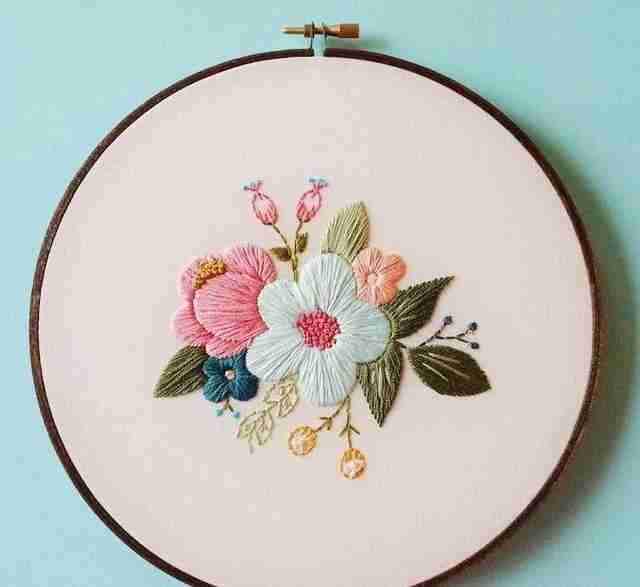
Chinese embroidery is not only one of the biggest parts of Chinese culture but also a crucial part of the Chinese people that opened up China to the rest of the world. The unique and intricate embroidery works were introduced to the world by the Silk Road, and the embroidery is, therefore, the part of Chinese culture that sold China as a great trade partner.
- But like the rest of the Chinese arts, it was used to share the Chinese worldview based on principles like the 5 elements or the Yin and Yang.
- The embroidery was regarded as a symbol of good luck and protection thanks to the incorporation of animals that offered these benefits. The dragons, for example, are a symbol of protection, nobility, good fortune, power, and divinity, and embroidery with the dragons would help emperors portray these qualities.
- Symbol of status, especially because the embroidery was often used or owned by high-ranking society and government officials only.
- It was also a sign of a happy marriage.
Chinese Embroidery History
Chinese embroidery’s first appearance and use is not specific, but it is believed to date back to the Neolithic Age. But it wasn’t until the 14th Century that it reached its peak.
How To Do Chinese Embroidery
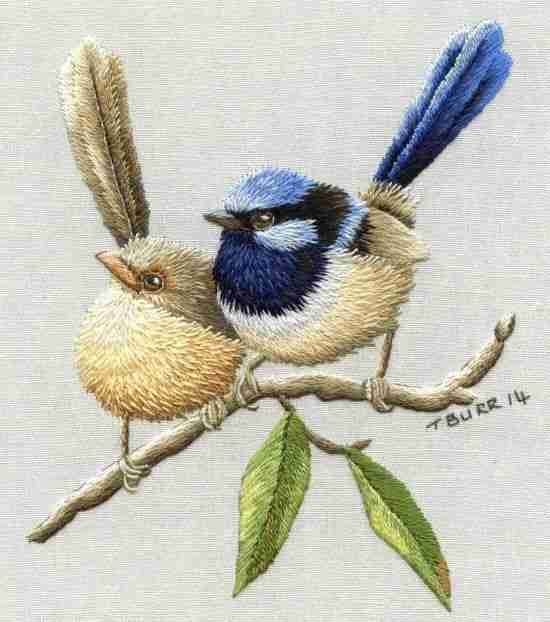
First, you’d have to settle on a stitch style. You get to choose between the couching stitch, satin stitch, seed, and stem stitch.
For the smoothest surfaces, satin stitches work great, but you could also employ the simulated surface shading. For the couching stitches, which are virtually invisible because of their use as anchors for other stitches, you need silver or gold stitches. Then you have stem stitching that requires looping of the thread over other thread types for an enhanced presence. The seed stitch is very intricate and also called the Chinese knot or the blind/ forbidden stitch.
It takes patience and a lot of practice to master any of these 4 stitches or just one of the embroidery styles above. So, give it time.
Chinese Embroidery Art
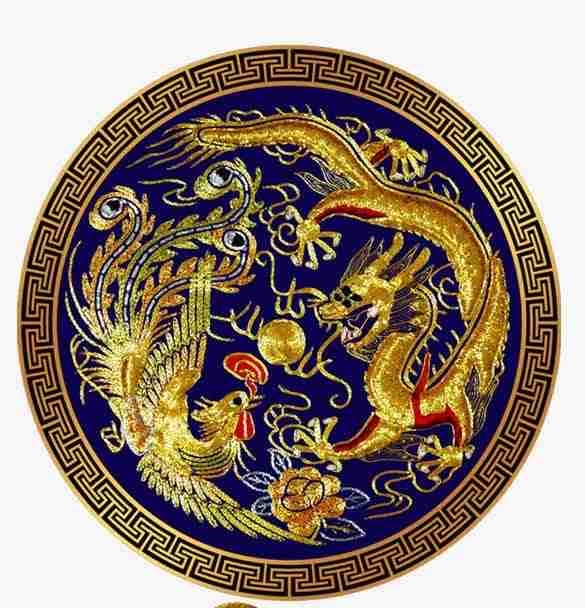
This art results from any of the embroidery styles above, and it is associated with specific regions. The art is highly valued thanks to the intricate embroidery styles and needlework. Not to mention the fact that they have to adhere to the Chinese beliefs of Yin and Yang, Feng Shui, and the 5 elements.